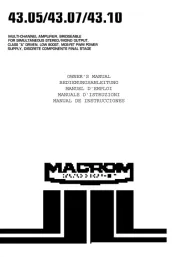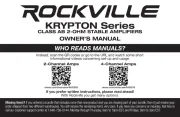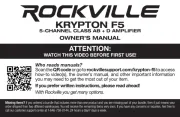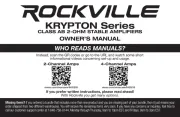Caliber CA 460 24V Handleiding
Bekijk gratis de handleiding van Caliber CA 460 24V (11 pagina’s), behorend tot de categorie Autoradio. Deze gids werd als nuttig beoordeeld door 51 mensen en kreeg gemiddeld 5.0 sterren uit 26 reviews. Heb je een vraag over Caliber CA 460 24V of wil je andere gebruikers van dit product iets vragen? Stel een vraag
Pagina 1/11

CA 460 Competition IV
Ma x i m um Power Out put a t 1 4 ,4V
4Ω20Hz - 30kHz THD 0,5% 4x 150W
4Ω1kHz Mono Bridged 2x 450W
Co n t in u o us Power Out put a t 1 4 ,4V
4Ω20Hz - 30kHz THD 0,5% 4x 50W
4Ω1kHz Mono Bridged 2x 150W
Fus e Ra t ing 15A
D i m en s io ns 290x260x65mm
CA 480 Competition IV
Ma x i m um Power Ou t put a t 1 4 , 4 V
4Ω20Hz - 30kHz THD 0,5% 4x 215W
4Ω1kHz Mono Bridged 2x 630W
Co n t in u o us Power Out put a t 1 4 ,4V
4Ω20Hz - 30kHz THD 0,5% 4x 70W
4Ω1kHz Mono Bridged 2x 225W
Fus e Ra t ing 15A
D i m en s io ns 350x260x65mm
Alle Caliber Competition IV 4-kanaals versterkers
hebben de volgende technische gegevens. Technische
gegevens die per model verschillen zijn apart opgenomen.
Frequentierespons (+0, -1dB)20Hz-30kHz
Totale harmonische vervorming <0,05% (80kHz LPF)
Signaal-ruisverhouding (A-Weighted) 95dB
Ingangsgevoeligheid RCA-ingang 15V-500mV
Ingangsimpedantie 20 kΩ
Dempingsfactor > 180
Uitgangsimpedantie 2 - 8Ω
HighPass/LowPass filter 50 - 250Hz
N E D E R L A N D S

E N G L I S H
2
F E A T U R E S
•Bridgeable outputs.
• ’Tri-mode’ output capability, simultaneous stereo & bridged mono set up is possible.
•Pulse Width Modulated (PWM) MOSFET Power Supply.
• 2Ωstable (4Ωmono-bridged)
•Double sided epoxy board for jumperless signal paths.
• Variable input sensitivity: 15V to 0.5V.
• Thermal-, Overload- and Shortcircuit protection.
•Excellent muting circuitry assures no turn on/off ‘pops’.
•Built-in adjustable HighPass/LowPass Filter.
•Differential inputs to shunt any input noise
•Signal output RCA’s for additional amplifier(s).
•Large power supply connectors for optimal power distribution.
• Chromium plated power connectors for optimal power distribution.
•European design and engineering.
• Chromium plated speaker connectors for optimal signal output
.
M O U N T I N G
The amplifier has to have at least 5cm (2”) ventilation space at all sides, to allow the heat to rise
away from the amplifier. Be sure that the power and signal cables can enter and leave the amplifier
in a straight line, to avoid the risk of malfunction. Always place the power- and signalcables at
opposite sides of the vehicle to reduce any noises.
The amplifier should be protected from exposure to moisture and direct sunlight.
Mark the mounting surface using the amplifier as a template, then drill 2.5mm (1/8”) diameter holes
at the marked locations and mount the amplifier using the supplied self-tapping screws.
I N S T A L L A T I O N
Remember to always disconnect battery ground before working on a vehicle’s electrical system!
Always place a fuse or circuit breaker no more than 30cm (12”) from the battery, no greather than
the fuse(s) of your amplifier for optimal protection.
G E T T I N G Y O U R P O W E R S T A R T E D
• First, the +24V terminal is connected directly to the battery of your car. Use a cable of at least
10mm2 (8 AWG), and make sure that the connectors are of the same value.
- Don’t forget the extra “Vehicle protection” fuse.
- The 24V + terminal should NOT be connected to the car fuse box.
• Second, the ground terminal (GND) must be fastened securely to the chassis of the vehicle with the
same gauge cable as the positive cable (the same amount of power has to run through it). Ensure
that all paint, undercoating or any other insulation is removed from the area where you want to
make your ground connection to.
• Third, the last cable to connect is your remote turn-on (REM +12V). Many radio-cassette and CD-
players have an output terminal for connection of the REM +12V of an amplifier. If you don’t have
such an output, a separate switch must be installed to control your amplifiers on/off function.

4
P A R T I C U L A R I T É S
• Sorties pontables.
• Possibilité de sortie "tri-mode" ainsi que d'une configuration mono pontée et stéréo simultanée.
• Alimentation MOSFET PWM (Pulse Width Modulated).
• 2 mono ponté)Ωstable (4Ω
• Plaque époxy double face pour chemins de signaux exempts de cavalier
• Sensibilité d'entrée variable: Entrée15V à 0.5V.
• Protection thermique, contre les surcharges et les courts-circuits.
• Excellent circuit de silencieux éliminant tous les bruits de commutation.
• Filtres passe-haut/passe-bas réglables intégrés.
• Entrées différentielles éliminant tout bruit d'entrée
• Prise Cinch de sortie du signal pour amplificateur(s) supplémentaire(s).
• Connecteurs d'alimentation surdimensionnés pour une répartition optimale de la tension d'alimentation
• Connecteurs d'alimentation chromée or pour une répartition optimale de la tension d'alimentation.
• Conçu et élaboré en Europe.
• Connecteurs pour haut-parleurs chromée or pour un signal de sortie optimal.
M O N T A G E
Un espace de 5 cm minimum doit être laissé le long de chaque côté de l'amplificateur afin de per-
mettre l'élimination de la chaleur qu'il dégage.Veillez à ce que les câbles d'alimentation et de signaux
puissent être raccordés en ligne droite à l'amplificateur, afin d'écarter tout risque de défaillance.
Placez toujours les câbles d'alimentation et de signaux aux extrémités opposées du véhicule afin de
réduire les parasites.
L'amplificateur doit être protégé contre l'humidité et les rayons directs du soleil.
Marquez la surface de montage en prenant l'amplificateur comme gabarit, puis percez des trous de
2,5mm de diamètre aux endroits indiqués et montez l'amplificateur à l'aide des vis auto-taraudeu-
ses fournies.
I N S T A L L A T I O N
N'oubliez pas de débrancher la masse de la batterie avant toute intervention sur le système
électrique d'un véhicule !
Pour une protection optimale, placez toujours un fusible ou un disjoncteur à 30cm maximum de la
batterie en veillant à ce que son intensité ne soit pas supérieure à celle du ou des fusibles de
l'amplificateur.
R A C C O R D E M E N T S É L E C T R I Q U E S
• D'abord, raccordez la borne 24V directement à la batterie de votre véhicule. Utilisez un câble d'une
section minimale de 10mm2et veillez à ce que les connecteurs soient de même valeur.
- N'oubliez pas le fusible supplémentaire de "protection du véhicule".
- La borne 24V + ne doit PAS être raccordée à la boîte à fusibles du véhicule.
• Ensuite, vous devez solidement fixer la borne de masse (GND) au châssis du véhicule avec un câble
de même section que le câble positif (puisqu'il doit acheminer la même tension). N'oubliez pas
d'éliminer la peinture, la couche de fond ou tout autre isolant de la zone de raccordement à la masse.
• Enfin, le dernier câble doit être raccordé au dispositif de mise sous tension à distance (REM +12V).
De nombreux radiocassettes et lecteurs de CD possèdent une borne de sortie prévue pour le
raccordement du REM +12V à un amplificateur. Si vous ne disposez pas d'une telle sortie, vous devez
installer un commutateur séparé qui commandera la mise sous/hors tension de votre amplificateur.
F R A N C A I S
Product specificaties
| Merk: | Caliber |
| Categorie: | Autoradio |
| Model: | CA 460 24V |
Heb je hulp nodig?
Als je hulp nodig hebt met Caliber CA 460 24V stel dan hieronder een vraag en andere gebruikers zullen je antwoorden
Handleiding Autoradio Caliber

4 Augustus 2023

19 Juni 2023

18 Juni 2023

13 Juni 2023

7 Juni 2023

10 Mei 2023

5 Mei 2023

3 Mei 2023

30 April 2023

29 April 2023
Handleiding Autoradio
- Rockville
- Majestic
- Lanzar
- Panasonic
- Ground Zero
- Smart
- Multilaser
- RetroSound
- Audison
- Vieta
- Rodek
- Roadstar
- VDO Dayton
- Auna
- Adcom
Nieuwste handleidingen voor Autoradio

12 September 2025

11 Augustus 2025

22 Juli 2025

21 Juli 2025

15 Juli 2025

14 Juli 2025

14 Juli 2025

14 Juli 2025

5 Juli 2025

4 Juli 2025